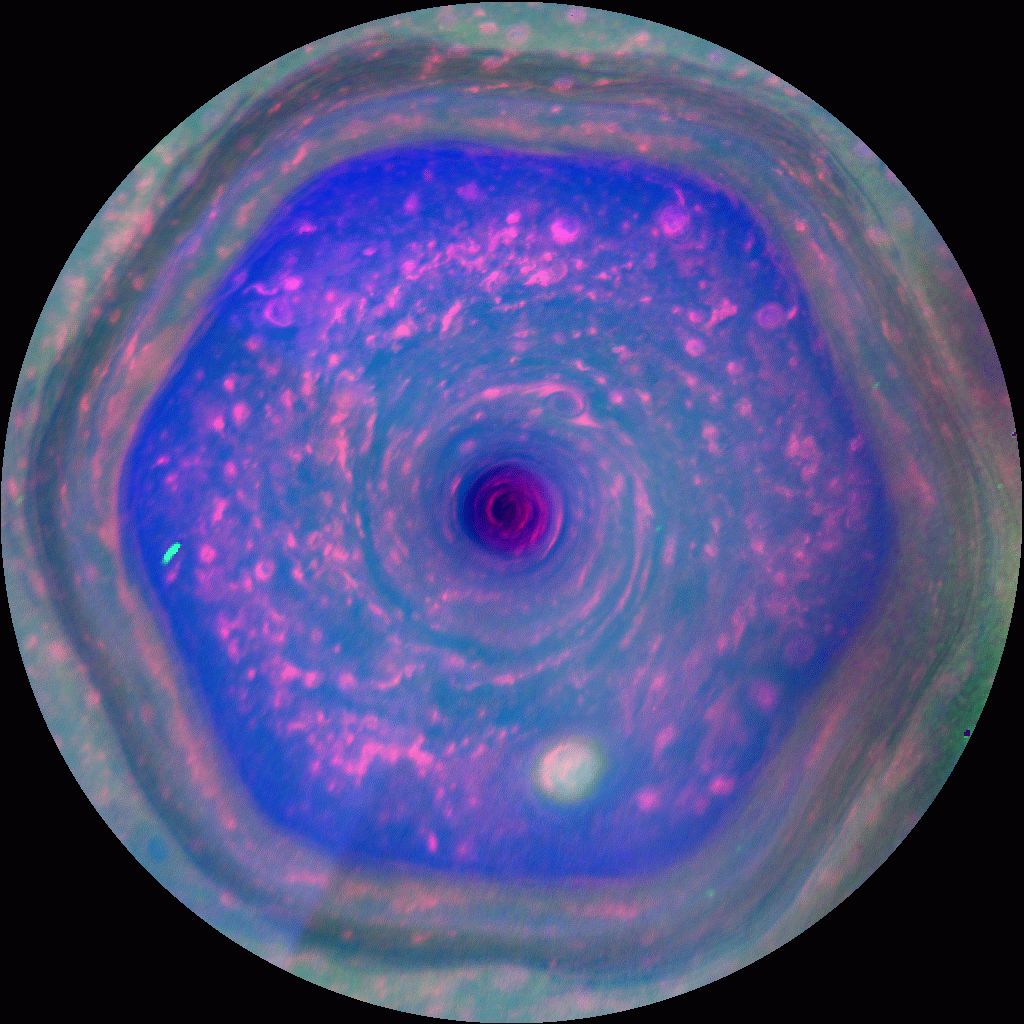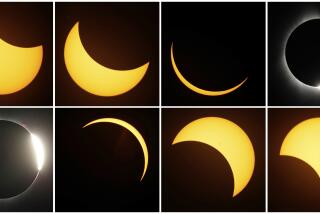Cassini’s best images yet of the ‘hexagon’ on Saturn [Video]
 Saturn’s strange hexagon is coming into better focus.
Saturn’s strange hexagon is coming into better focus.
A six-sided weather pattern is churning over Saturn’s north pole, and thanks to new data collected by NASA’s Cassini mission, scientists -- and the rest of us -- can now see it with more clarity than ever before.
The hexagon shape you see wobbling in the video above is a fast-blowing jet stream of 200-mph winds. The pattern spans 20,000 miles, and the dark area in its center, located directly over the north pole, is a massive hurricane with an eye 50 times larger than the largest one seen on Earth.
Those reddish oval shapes are swirling vortices. The largest one, whitish and toward the bottom right, is about 2,200 miles across, or about twice as large as the biggest hurricane on Earth.
Saturn’s unusual hexagon weather pattern, the only one like it in the solar system, was discovered in 1981 during Voyager 2’s flyby of the planet, and it appears to have remained relatively unchanged since.
“A hurricane on Earth typically lasts a week, but this has been here for decades -- and who knows -- maybe centuries,” Andrew Ingersoll, a Cassini imaging team member, said in a statement.
Cassini has photographed the hexagon before, but Saturn is just now starting to move into its summer season, so the weather pattern is better illuminated as the Saturn’s north pole tilts toward the sun.
The image above is a false-color image that lets scientists know where the small haze particles are concentrated (inside the hexagon) and where the large haze particles are concentrated (on the outside). From this image, scientists have determined that the jet stream acts as a barrier keeping large particles from moving into the hexagon.
If you could see the hexagon in natural light it would look like this -- pale blue, gold and taupe.
Kunio Sayanagi, a Cassini imaging team associate at Hampton University in Virginia, said studying weather on other planets can help us better understand weather on Earth.
“It’s like psychology,” he said. “You don’t study just one person and think you understand psychology. You have to study many people. Weather is like that. We need to study weather on lots of planets to understand how it works.”
Whither the weather on Saturn? Follow me on Twitter for more like this.
ALSO:
NASA’s E.T. smartphone satellite has phoned home
Life beyond Earth? NASA’s chief scientist would like to find it
Hubble senses water on five planets, bodes well for finding new Earths







